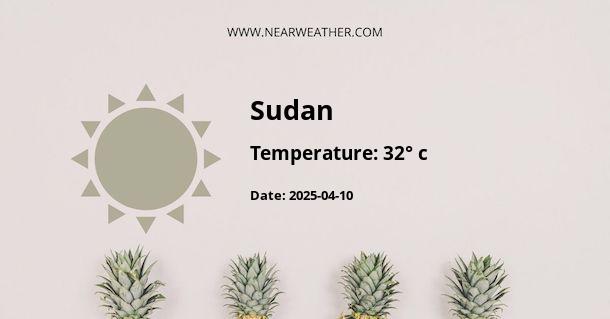Climate and Weather in the Republic of the Sudan (SD)
The Republic of the Sudan, located in northeastern Africa, has a diverse climate that varies across its vast territory. The country is characterized by its desert landscapes, the Nile River, and the Red Sea coastline. Understanding the climate and weather patterns in the Sudan is crucial for both residents and travelers to plan their activities and make necessary preparations.
Geographical Factors
The climate in the Sudan is influenced by various geographical factors, including its position on the Earth, elevation, and surrounding bodies of water. The country lies between latitudes 8° and 22°N, which places it in the tropical and subtropical regions. It is also predominantly flat, with the exception of the eastern highlands and mountain ranges in the northeast.
The Republic of the Sudan is bordered by the Red Sea to the east and is adjacent to several countries, such as Egypt, Libya, Chad, Central African Republic, South Sudan, Ethiopia, and Eritrea. These neighboring bodies of water and land masses have a significant impact on the climate patterns experienced in the country.
Seasons and Rainfall
The Sudan experiences two primary seasons: the dry season and the wet season. The dry season generally extends from November to March, while the wet season occurs from April to October.
During the dry season, the country experiences hot and dry weather with very little rainfall. Temperatures can soar, particularly in the northern desert regions, reaching highs of over 40°C (104°F). Humidity levels are relatively low during this time, making it more bearable for those who can tolerate high temperatures.
As the wet season approaches, the weather becomes more unpredictable. The Sudan receives the majority of its annual rainfall during this period, with some areas experiencing over 500mm (19.7 inches) of precipitation. The southern regions generally receive more rainfall compared to the northern parts of the country.
The wet season brings relief from the scorching heat and dust, although it can also lead to occasional flooding in low-lying areas. The temperatures during this season are relatively cooler, ranging from 25°C to 35°C (77°F to 95°F), and the humidity levels increase significantly.
Temperature and Humidity
The Sudan experiences high temperatures throughout the year, particularly in the desert regions. During the dry season, temperatures can reach extreme levels, exceeding 45°C (113°F) in some areas. The eastern coastal regions along the Red Sea generally have slightly milder temperatures due to the cooling effect of the sea breeze.
Humidity levels vary across the country. In the northern desert regions, the humidity is generally low, making the high temperatures more tolerable. However, in the southern regions and along the Red Sea coast, the humidity levels can be higher, especially during the wet season.
Wind Patterns
The Republic of the Sudan experiences various wind patterns throughout the year. The most notable is the Harmattan wind, which blows from the northeast and carries dry and dusty air from the Sahara Desert. This wind is most prevalent during the dry season and can significantly reduce visibility and create dusty conditions.
During the wet season, the country experiences winds from the southwest, known as the southwest monsoon. These winds bring moisture from the Indian Ocean, resulting in increased rainfall across the Sudan.
Regional Variations
Due to the vast size of the country and its diverse geographical features, there are regional variations in climate and weather patterns within the Sudan. The northern desert regions, including the Nubian Desert and the Bayuda Desert, experience extremely hot and arid conditions throughout the year.
The eastern coastal regions, including Port Sudan, have a slightly milder climate due to the influence of the Red Sea. The temperatures are generally lower compared to the desert regions, and the sea breeze provides some relief from the heat.
The southern regions, including the South Sudan border and the Sudd wetlands, have a more tropical climate with higher levels of rainfall and humidity. The wet season in these areas can be prolonged and may lead to flooding in some parts.
Conclusion
The Republic of the Sudan experiences a diverse climate with distinct dry and wet seasons. The dry season is characterized by hot temperatures, low humidity, and minimal rainfall, while the wet season brings relief from the heat with increased rainfall and higher humidity levels. Understanding the climate and weather patterns in the Sudan is crucial for planning activities and making necessary preparations, especially when traveling to different regions within the country.
A - Sudan's Latitude is 16.000000 & Longitude is 30.000000.
A - Weather in Sudan is 32° today.
A - Climate Conditions in Sudan shows few clouds today.
A - Humidity in Sudan is 7% today.
A - Wind speed in Sudan is 17.06 km/h, flowing at 358° wind direction. today.
